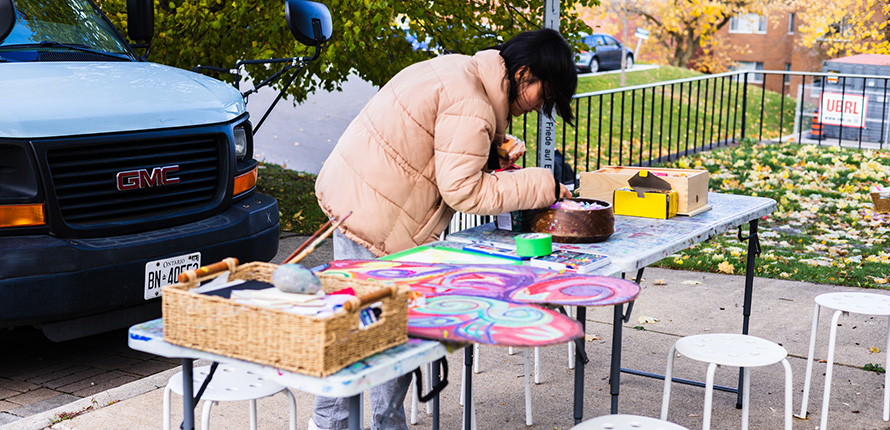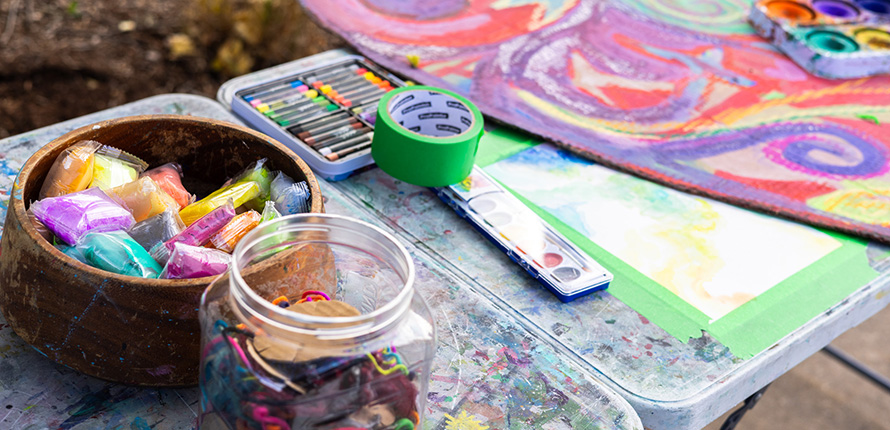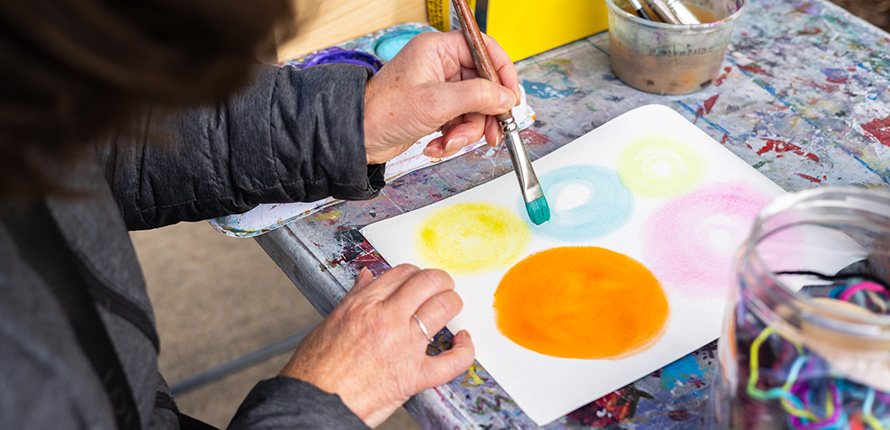We use cookies on this site to enhance your experience.
By selecting “Accept” and continuing to use this website, you consent to the use of cookies.


Mary Krohnert (MA '25), has built a career centred on intersectional community engagement through the arts, which began when she initiated The LivingRoom Community Art Studio in 2013.
What started as a weekly pop-up in a closed restaurant, transformed into a store-front studio space, which then transitioned into the Mobile Art Studio; a converted short bus serving as an Art Hive, creative re-use centre and mobile place making machine.

Krohnert is a graduate of Toronto Metropolitan University and the Toronto Art Therapy Institute, has studied Community Art Studios, Methods and Materials at Concordia University and graduated from Luther’s Spiritual Care and Psychotherapy program in 2025. Initially thinking she would follow a traditional art therapist career path, Krohnert never imagined this is where her journey would take her.
“If you'd asked me all those years ago whether this is what I would be doing now, I don't think I would have believed you. When I learned initially there were spaces that you could drop in to make art [and it] didn't matter who you were, what kind of art you made or how long you stayed, all the bells and whistles started going off in my head,” Krohnert said.
“I was like; this is where I'm meant to be. I'm meant to be engaging people where they're at and learning from them,” they said.
In collaboration with Luther Art Hive, Luther was fortunate to host the Mobile Art Studio on campus for Thrive Week, providing an accessible, welcoming space for students to explore, create, and engage in artmaking.
Art Hives are community art studios that welcome everyone as an artist, no matter what their background or experience is, which is what the Mobile Art Studio is designed to do—meet people where they’re at.

“It gives people a [chance] to connect with others they may not otherwise have the opportunity to meet. What often ends up happening is this sense of belonging. They can be seen and heard through what one's creating or just be in this space as you are. That's something we refer to as “creative humaning,” this capacity to create ourselves, or to recreate ourselves in spaces like this, recognizing that we are also works in progress,” Krohnert said.
Through a series of free events, Thrive Week’s goal is to boost wellness on campus for students, and creating art is a very effective way to engage in self-care.
“When people make art, it often helps them to reboot, relax, and focus on something that doesn't require [and] isn't asking for perfection,” Krohnert said.
“I think one of the things Art Hives does really well, is it deconstructs the hierarchies around therapy. It's not necessarily that people are engaging in therapy when they come here, although it is difficult for me to separate the part of myself that is an art therapist. I'm using all those skills and resources, and knowledge,” she said.
The creative process doesn’t have to be perfect, and it’s encouraged not to be.

“I find for the students we work with, they're allowed to make a mess, to play, to have something be to be incomplete, whatever they choose to express. However they choose to express it, it is enough as it is,” Krohnert said.
“It doesn't need to be beautiful. In fact, making ugly art is often an excellent entry point, especially for folks who are a bit anxious. I just invite them to commit, as hard as they can, to making the ugliest work of art that they can possibly make. Inevitably, it ends up being beautiful,” she said.
While the Mobile Art Studio was on campus, students sat outside by the bus and inside Keffer Chapel working with a wide range of materials to craft and create a variety of art pieces at their own pace and without judgement.

“On one side of the spectrum, it might be just pure fun, a chance to sit and laugh and play and be silly. On the other end of the spectrum, it offers people a chance to be held in a space without fear of judgment, to explore, to experiment and let the art hold some of the hard stuff that they may not understand in that moment, they can choose to release it afterwards, or take it with them to give it away,” Krohnert said.
Through this important work, Krohnert is providing creative resources to underserved areas while bridging the gap between art and community.
“It provides those opportunities for people to connect, to express themselves, to be recognized as an artist and not necessarily as anything else they might be identified outside of that space.”